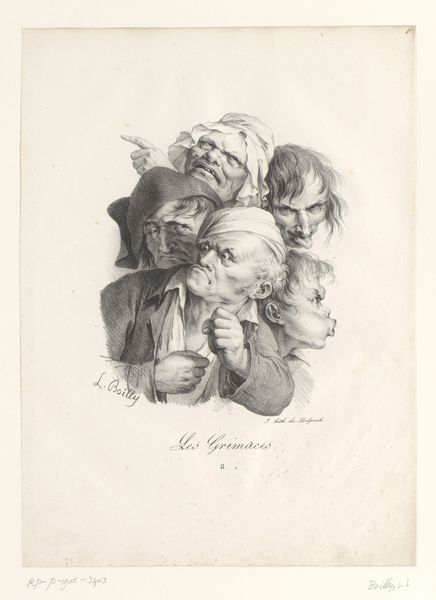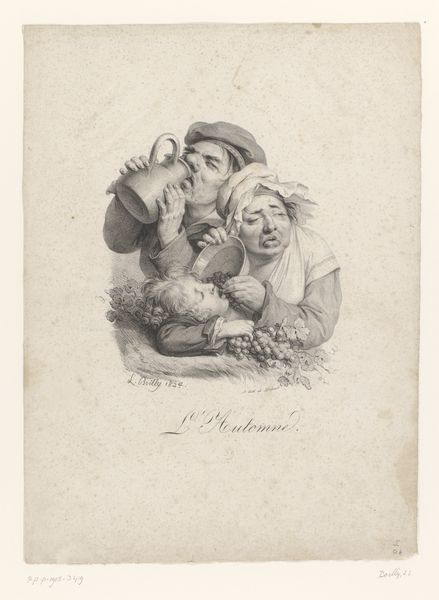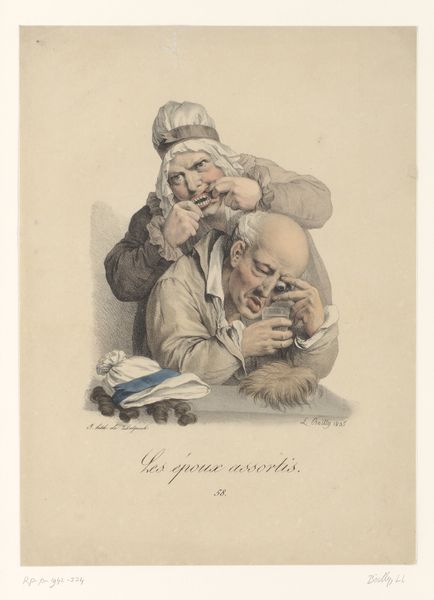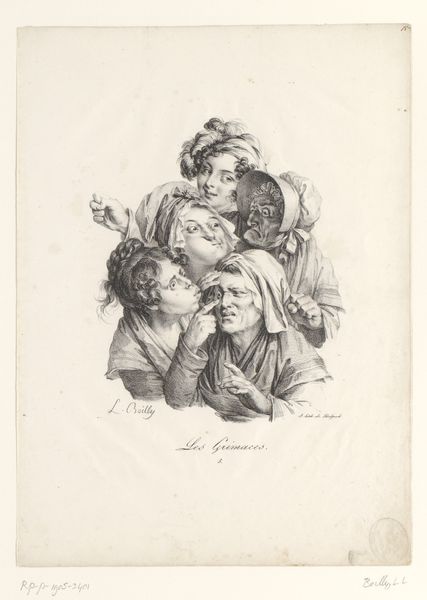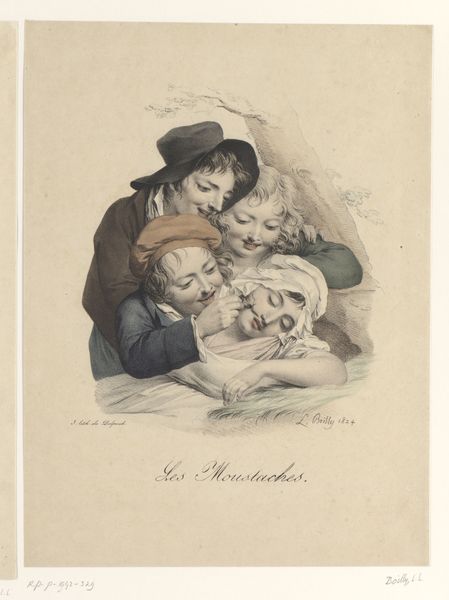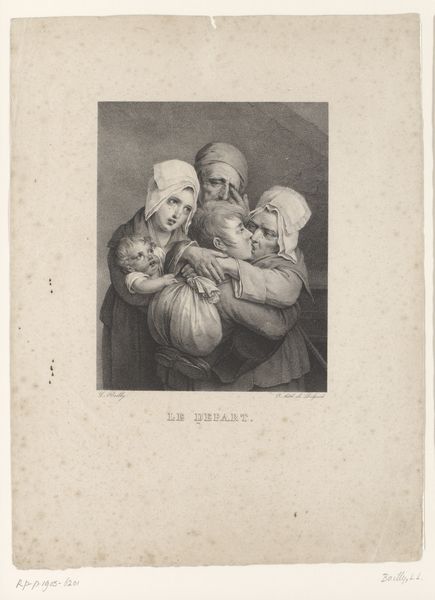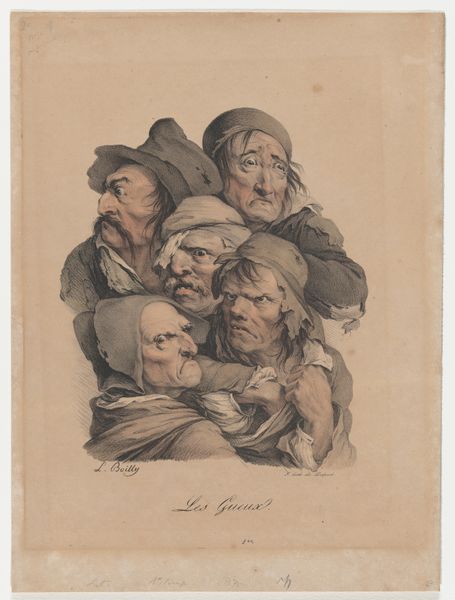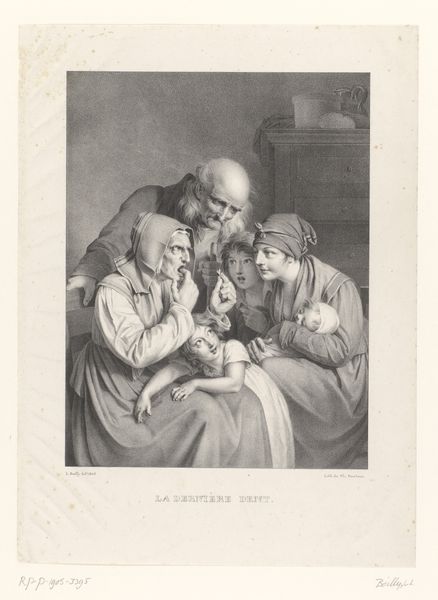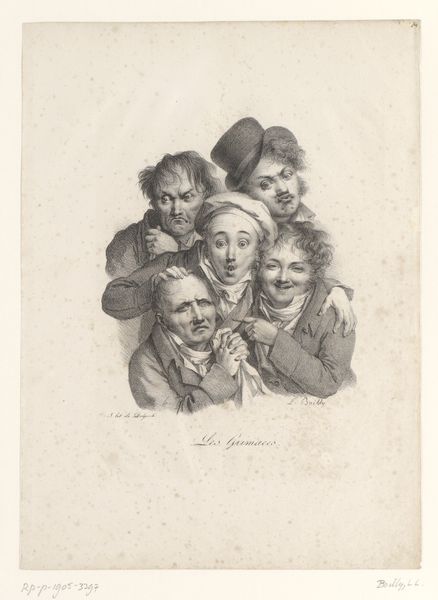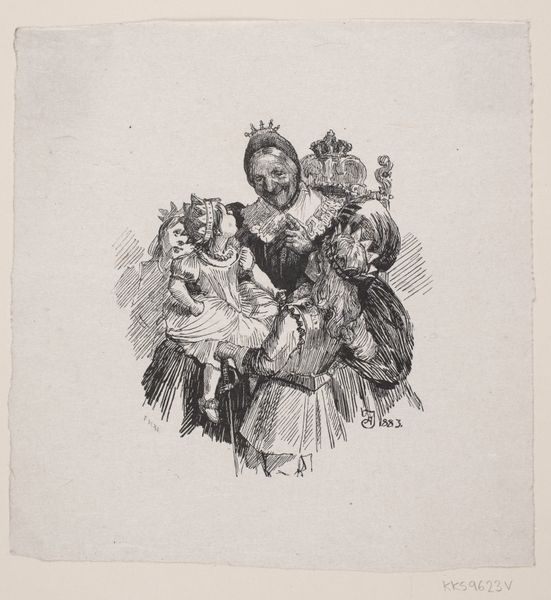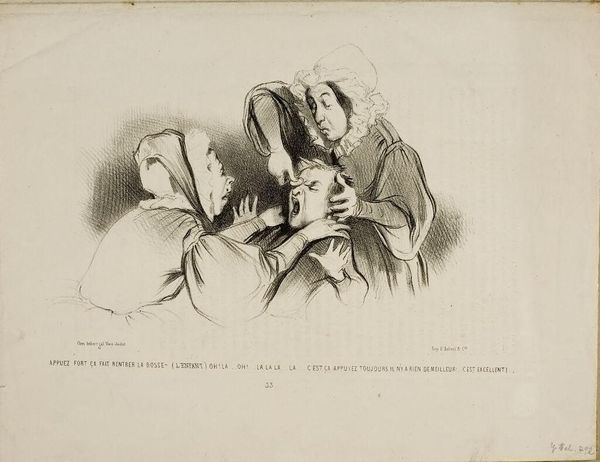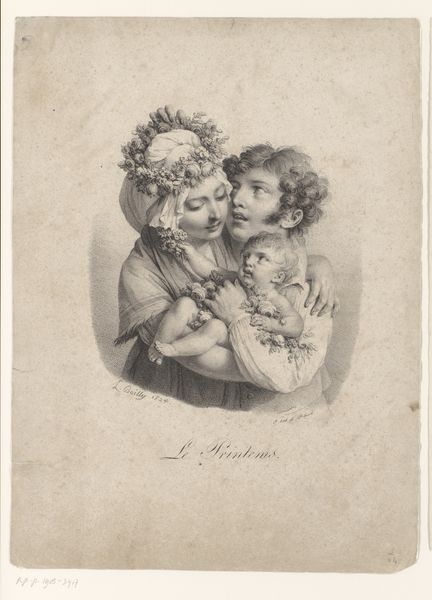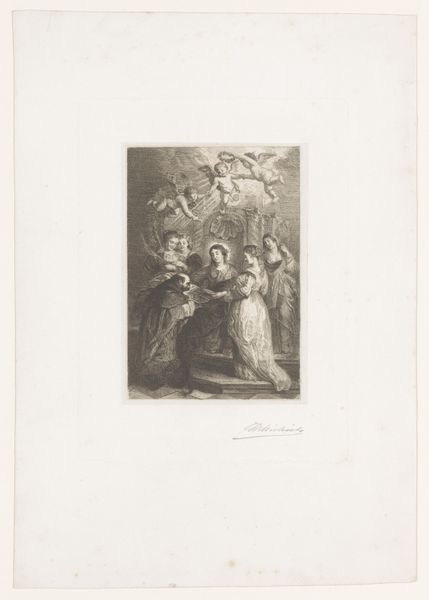
engraving
#
portrait
#
narrative-art
#
old engraving style
#
figuration
#
romanticism
#
portrait drawing
#
genre-painting
#
engraving
Dimensions: height 342 mm, width 255 mm
Copyright: Rijks Museum: Open Domain
Louis Léopold Boilly captured this scene of fortune-telling with delicate strokes of ink, a snapshot of 19th-century Parisian life. At its center, we see the ancient ritual of palmistry, where lines on the hand are read as pathways to destiny. The fortune-teller, a crone with a knowing gaze, holds the hand of a young woman, their connection transcending mere curiosity, tapping into primal hopes and fears about the future. Consider the dog nestled in the fortune-teller's arms. Dogs have long been symbolic of fidelity, loyalty, and protection, yet here, it’s juxtaposed with the uncertainty of fate. This iconography isn't isolated; it echoes through time. The gesture of reading a palm appears in ancient frescoes and medieval tapestries, each time imbued with the prevailing beliefs and anxieties of the era. What does it tell us about the enduring human need to control the uncontrollable? What are the symbols and motifs present? What do these symbols mean historically, culturally, or religiously?
Comments
No comments
Be the first to comment and join the conversation on the ultimate creative platform.
